Today’s Current Affairs:27th September 2025 for UPSC IAS exams, State PSC exams, SSC CGL, State SSC, RRB, Railways, Banking Exam & IBPS, etc
Table of Contents
Khoe-San : New Study
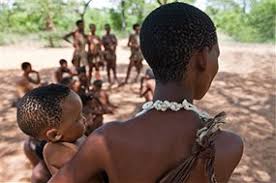
A new genetic study published in the Cell Press journal reveals that European colonisation strongly altered the genetic ancestry of the indigenous Khoe-San peoples of southern Africa.
- Khoe-San is a collective term for the indigenous peoples of southern Africa, encompassing:
San (Bushmen): Hunter-gatherers. - Khoekhoe (Khoi): Cattle, goat, and sheep pastoralists.
- They represent one of the earliest divergent human lineages, with exceptionally high genetic diversity.
- The research highlights sex-biased migration, where European male settlers displaced Khoe-San men, while Khoe-San women contributed significantly to present-day genetic lineages.
- The study also shows the impact of the slave trade, where enslaved women from South Asia, Southeast Asia, Eastern Africa, and Madagascar were brought to the Cape by the Dutch East India Company (VOC).
BRICS : In News
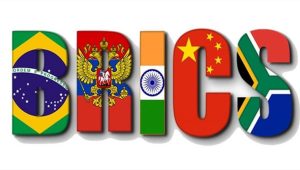
The Indian Prime Minister recently met the Russian Deputy Prime Minister to discuss establishing a BRICS Grain Exchange to enhance agricultural trade among member countries.
- BRIC: Brazil, Russia, India, and China.
- BRIC held its first meeting in 2006 during the G8 Outreach Summit and its first standalone summit in Russia in 2009.
- With the inclusion of South Africa in 2010, BRIC became BRICS.
- In 2024, Iran, Egypt, the UAE, and Ethiopia
- In 2025, Indonesia joined as a full member.
- Saudi Arabia has not formalised its membership, while Argentina opted out despite initial plans to join.
- Membership (2025)
- Core Members (10): Brazil, Russia, India, China, South Africa, Iran, Egypt, UAE, Ethiopia, Indonesia.
- Partner Countries (11): Belarus, Bolivia, Kazakhstan, Cuba, Nigeria, Malaysia, Thailand, Vietnam, Uganda, Uzbekistan.
Foreign Contribution Regulation Act:

The Union Home Ministry revoked the FCRA licence of the Students Educational and Cultural Movement of Ladakh (SECMOL), founded by climate activist Sonam Wangchuk.
- The Foreign Contribution (Regulation) Act (FCRA) was originally enacted in 1976 during the Emergency to prevent foreign influence on India’s internal affairs through financial contributions.
- The FCRA, 2010, currently in force, regulates the acceptance and utilisation of foreign funds by individuals, associations, and companies in India.
- Its primary objective is to ensure that foreign donations do not compromise national sovereignty, integrity, or internal security, and are used only for legitimate developmental purposes.
- Amendments to FCRA:
- FCRA (Amendment), 2010
- Consolidated the 1976 law.
- Expanded coverage to associations, NGOs, and companies.
- Strengthened the regulatory framework.
- FCRA (Amendment), 2020 Key Changes
- Ban on Transfers: Prohibits NGOs from transferring foreign contributions to other NGOs or individuals.
- Mandatory Aadhaar: All office bearers must provide Aadhaar/passport/OCI details for registration.
- FCRA Account: All contributions must be received only in the designated SBI branch, New Delhi.
- Reduced Administrative Expenses: Limit cut from 50% to 20% of foreign funds.
- Renewal of Licence: Renewal contingent on government scrutiny for fictitious entities or misuse.
- Suspension Extension: Suspension of registration can last up to 360 days.
- Surrender Provision: Organisations can voluntarily surrender their FCRA licence, subject to approval.
- Bar on Public Servants: Public servants are prohibited from receiving foreign contributions.
- FCRA Rules (Amendment), 2022
- Increased the annual limit for foreign remittances from relatives abroad from ₹1 lakh to ₹10 lakh without prior intimation.
- Simplified compliance for smaller transactions but reinforced safeguards against foreign funds that may threaten national interests.
- FCRA (Amendment), 2010
Nightmare Bacteria:
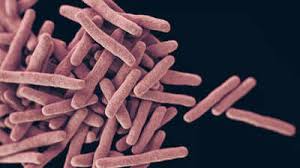
According to scientists at the US Centers for Disease Control and Prevention (CDC), drug-resistant ‘nightmare bacteria’, driven by the NDM gene, are spreading faster than ever in the United States.
- Nightmare Bacteria is used to describe Carbapenem-resistant Enterobacteriaceae (CRE).
- This group of bacteria, which includes Klebsiella pneumoniae and Escherichia coli (E. coli), has developed resistance to carbapenems (a class of “last-resort” antibiotics usually reserved for severe infections).
- The CDC calls them “nightmare” because they: Spread resistance genes easily to other bacteria. And they do not respond to most antibiotics, making treatment difficult.
- Symptoms of Nightmare Bacteria infections
- Urinary tract infections: Feeling a burning sensation, a constant urge to urinate or ‘cloudy’ urine
- Bloodstream infections: High fever, rapid heartbeat or very low blood pressure.
- Pneumonia or lung infection: Cough, shortness of breath or chest pain.
- Antibiotic overuse: frequent or unnecessary use of antibiotics in humans and livestock has fueled resistance.
- Hospital spread: patients on ventilators, catheters, or IV drips are especially vulnerable.
- Global travel: resistant strains can move quickly across borders.
- Post-pandemic vulnerabilities: COVID-19 left many patients with long hospital stays and heavy antibiotic use, creating more chances for resistant germs to thrive.
- NDM-1 (New Delhi Metallo-beta-lactamase-1) is an enzyme that makes bacteria resistant to a wide range of powerful antibiotics.
- The gene for NDM-1 encodes beta-lactamase enzymes called carbapenemases, which makes bacteria resistant to antibiotics, including carbapenem, which is used to treat other superbugs such as methicillin-resistant Staphyloccus aureus (MRSA).
Forum for India-Pacific Islands Cooperation:
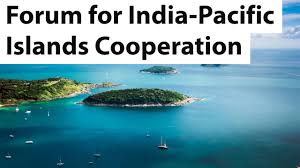
The Ministry of External Affairs hosted a meeting of the Foreign Ministers of the Forum for India-Pacific Islands Cooperation (FIPIC) in New York.
- It is a multilateral platform established by India to enhance cooperation with the Pacific Island countries.
- It was established in 2014 during the Prime Minister of India’s visit to Fiji
- Member countries: FIPIC includes 14 of the island countries – Cook Islands, Fiji, Kiribati, Marshall Islands, Micronesia, Nauru, Niue, Palau, Papua New Guinea, Samoa, Solomon Islands, Tonga, Tuvalu, and Vanuatu.
- In line with the “Act East Policy”, through FIPIC, India has primarily focused its efforts on the Pacific Islands.
- At this moment, total annual trade of about $300 million between the Indian and Pacific Island countries, whereas exports are around $200 million and imports are around $100 million.
- Since from 2014 three FIPIC summits have been held, 1st 2014 (Suva, Fiji), 2nd 2015 (Jaipur, India), 3rd 2023 (Port Moresby, Papua New Guinea).
- Key Initiatives of India related to FIPIC:
- Setting up of a special USD one million fund for adapting to climate change and clean energy, establishing a trade office in India
- Pan Pacific Islands e-network to improve digital connectivity,
- Visa on arrival at Indian airports for all the 14 Pacific Island countries,
- Cooperation in space technology applications for improving the quality of life of the islands, and training to diplomats from Pacific Island countries.
National Geoscience Awards 2024:
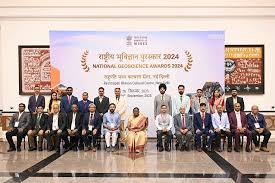
The President of India will confer the prestigious National Geoscience Awards (NGA) 2024 at a function to be held at the Rashtrapati Bhavan Cultural Centre, New Delhi.
- It was instituted in 1966 by the Ministry of Mines, Government of India.
- The National Geoscience Awards (formerly known as the National Mineral Awards until 2009) are among the country’s oldest and most prestigious honors in the field of geosciences.
- Objective is to honour individuals and teams for extraordinary achievements and outstanding contributions in various fields of geosciencese. mineral discovery & exploration, Mining Technology & Mineral Beneficiation, fundamental/ applied geosciences.
- Any citizen of India with significant contribution in any field of geosciences is eligible for the award.
- It is awarded annually under the following three categories:
- National Geoscience Award for Lifetime Achievement
- National Geoscience Award
- National Young Geoscientist Award
- For the year 2024, 12 awards have been finalized under these three award categories, which include 09 individual and 03 team awards.
Pallikaranai Marshland:
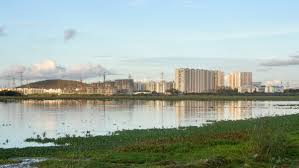
The southern bench of the National Green Tribunal has ordered a halt on all construction activity within one kilometre of the Pallikaranai Marshland until a scientific study is conducted.
- It is a freshwater marsh and partly saline wetland situated about 20 kilometres south of the city of Chennai, Tamil Nadu.
- It serves as an aquatic buffer of the flood-prone Chennai and Chengalpattu districts.
- It encompasses 65 wetlands, through two outlets, viz., Okkiyam Madavu and the Kovalam Creek, and falls into the Bay of Bengal.
- It is flanked by the Buckingham Canal on its eastern periphery.
- It is one of the Ramsar sites in India.
- The diverse ecosystem of the marshland supports some 115 bird species, ten mammals, 21 reptiles, ten amphibians, 46 fish, nine molluscs, five crustaceans, and seven butterfly species.
- These include notable species such as Russell’s viper (Daboia siamensis) and birds such as the glossy ibis (Plegadis falcinellus), grey-headed lapwings (Vanellus cinereus), and Pheasant-tailed jacana (Hydrophasianus chirurgus).
- Although tropical in bio-climate, the influence of the Bay of Bengal has been significant on the Marsh.
- It continues to face significant anthropogenic pressures, including encroachments and sewage discharge.
National Initiative on Water Security:

The Union Government has launched the National Initiative on Water Security under Mahatma Gandhi National Rural Employment Guarantee Act (MGNREGA), 2005, prioritizing water conservation across rural India.
- National Initiative on Water Security aims to address depleting groundwater levels and ensure long-term rural water security.
- To implement this, the MGNREGA Act, 2005, was amended to make water conservation works mandatory by allocating funds, providing a statutory backing to the initiative.
- In ‘over-exploited’ blocks, 65% of MGNREGA funds will be used for water-related works.
- In ‘semi-critical’ blocks, 40% of MGNREGA funds will be spent on water conservation.
- Even in blocks without water scarcity, at least 30% of funds will go towards water-related works.
- It shifts focus from ad hoc water works to systematic water security planning, and reflects India’s commitment to water conservation through campaigns like ‘Catch the Rain’ and ‘Amrit Sarovars’.
- MGNREGA has become the world’s largest social welfare program, creating over 1.25 crore water conservation assets like farm ponds and check dams.
- These efforts have reduced water stress in rural areas. Under Mission Amrit Sarovar, more than 68,000 reservoirs were constructed or rejuvenated in the first phase.
MoSPI Comprehensive Modular Survey: Education 2025:
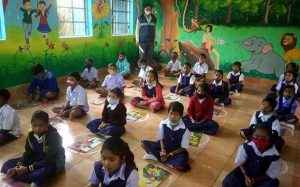
School dropout rates in India have halved in just two years, according to the MoSPI Comprehensive Modular Survey: Education 2025.
- It is Conducted by the Ministry of Statistics & Programme Implementation (MoSPI) during April–June 2025 as part of the 80th round of the National Sample Survey (NSS).
- Dropout decline: Secondary level (8.2% in 2024-25 vs. 13.8% in 2022-23), Middle level (3.5% vs. 8.1%), Preparatory stage (2.3% vs. 8.7%).
- Structural turnaround: Early interventions like Samagra Shiksha Abhiyan, mid-day meals, scholarships, and NEP 2020 flexibility credited for success.
- Affordability challenge: Household expenditure rising — Govt. school (Rs 2,639 rural; Rs 4,128 urban) vs. private unaided schools (Rs 19,554 rural; Rs 31,782 urban).
- Secondary fragility: Adolescents still face pressures of income needs, early work, and limited higher-secondary schools.
- Long-term outlook: India could move towards universal school completion in a decade if access and affordability are addressed.
Dolmens of Kodaikanal : Fast Disappearing
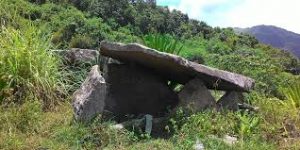
The dolmens of Kodaikanal, megalithic structures dating back over 5,000 years, are fast disappearing, with less than 50% of those recorded in the early 20th century still standing.
- Dolmens are megalithic box-like stone structures, usually a large stone slab resting on three vertical pillars, built above the ground.
- They often served as burial chambers, memorials, or ritual sites, though some local traditions suggest habitation use.
- Constructed between 1500–2000 BCE (Pre-Iron Age), making them among the oldest structures in the Palani Hills.
- Linked to early tribes such as the Paliyans and Kurumbas, who are believed to be either descendants or related to the dolmen builders.
- First systematically recorded by Jesuit priests Rev. A. Anglade S.J. and Rev. L.V. Newton S.J. in the early 20th century.
- Their surveys, published in the 1928 Memoirs of the Archaeological Survey of India, noted ongoing destruction even during road construction.
- Excavations at Thandikudi and Pethuparai revealed artefacts like black-and-red ware pottery and carnelian beads, proving continuous habitation from pre-Iron Age to early historic periods.
- Features:
- Simple construction: Stones were not cut or dressed, but sourced from natural quarries.
- Cap-stone design: Slight slope on top stone allowed rainwater runoff, preventing chamber flooding.
- Strategic placement: Built on rocky ridges, slopes, or near large rock expanses for natural stability.
- Communication role: Some circles placed within torch-signal visibility of each other.
- Altitude factor: Most sites are at 4000–5000 ft above sea level, ideal for forest produce like cardamom and pepper, explaining ancient settlement patterns.
External Affairs Minister S. Jaishankar addressed the India–SICA Foreign Ministers’ Meeting:
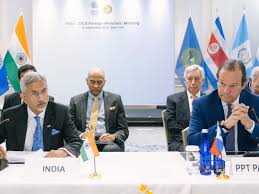
Central American Integration System (SICA) is the institutional framework designed to govern and facilitate regional integration in Central America.
- Secretariat: Located in El Salvador.
- Created by the Tegucigalpa Protocol (December 13, 1991), which updated the older ODECA Charter.
- Operation Date: Became fully operational on February 1, 1993.
- Recognized by the UN General Assembly (Resolution A/48 L, 1993).
- Founding States (6): Costa Rica, El Salvador, Guatemala, Honduras, Nicaragua, Panama.
- Later Members (2): Belize, Dominican Republic.
- Extra-Regional Observers: Includes the EU, UK, Spain, Germany, Japan, South Korea, and India (a designated partner).
- Aims:
- Stability: Achieve and consolidate peace, liberty, democracy, and overall development.
- Governance: Promote human rights and the rule of law.
- Economy: Progress from a Free Trade Area toward a fully realized Customs Union.
- Cohesion: Develop regional infrastructure, a unified visa/passport system, and common global positions.
HSBC and IBM announced the world’s first quantum-enabled algorithmic bond trading trial.:
It Is the trial is the world’s first-known empirical evidence of using a hybrid quantum-classical computing approach to solve a real-world problem in algorithmic bond trading. It involved HSBC and IBM, using real, production-scale trading data from the European corporate bond market. The teams utilized a combination of quantum and classical computing resources, rather than quantum computers alone.The IBM Heron quantum processor was used to augment classical computing workflows.Algorithmic trading is the use of computer programs to automatically execute buy or sell orders for securities (like stocks, bonds, futures, or options) based on a predefined set of rules. These rules or criteria are coded based on factors like price, time, volume, or technical indicators.
The World Para Athletics Championships 2025:
India is hosting its first-ever World Para Athletics Championships 2025 in New Delhi, inaugurated at Jawaharlal Nehru Stadium. The flagship global competition for para-athletes, organised biennially by World Para Athletics (under IPC). It Serves as the highest platform (after Paralympics) for track & field events for differently-abled athletes. New Delhi, India – first time India is hosting the Championships. Venue: Jawaharlal Nehru Stadium, with newly built world-class Mondo track.Mascot: “Viraaj” – a young elephant with a blade prosthesis.Symbolises strength, optimism, inclusivity, courage, and resilience of para-athletes.
2G Ethanol:
India allowed the export of 2G ethanol, with mandatory export licenses and feedstock certificates.2G (Second-Generation) ethanol is an advanced biofuel made from non-food, lignocellulosic biomass such as agricultural residues, forestry waste, woody biomass, algae, and municipal solid waste.
Unlike 1G ethanol (from edible crops like sugarcane, maize), 2G uses waste materials, ensuring food security and sustainable fuel use.
IUCN Recognises Dugong Conservation Reserve in Palk Bay:
The IUCN World Conservation Congress 2025 (Abu Dhabi) adopted a resolution recognising India’s first Dugong Conservation Reserve in Palk Bay, Tamil Nadu as a global model for marine biodiversity conservation. It is India’s first Dugong Conservation Reserve, notified in September 2022 under the Wildlife Protection Act, 1972. Recognised by IUCN in 2025 as a pioneering step for marine biodiversity and community-led conservation. It Covers 448.34 sq km across Thanjavur and Pudukkottai districts, Tamil Nadu. It is Situated in the northern Palk Bay, harbouring 12,250 hectares of seagrass meadows.It Protects Dugong dugon (sea cows), listed as Vulnerable on the IUCN Red List. Seagrass beds here also support commercial fish, crabs, shrimps, benefitting marginal fishermen.
Sudhanshu Vats Appointed President of ASCI, Subramanyeswar Vice Chair:
Sudhanshu Vats, Managing Director of Pidilite Industries Ltd, has been appointed as the new President of the Advertising Standards Council of India (ASCI). The announcement was made during ASCI’s 39th Annual General Meeting, ahead of the council’s 40th anniversary in October 2025. The move comes at a time when the advertising ecosystem is rapidly evolving, making self-regulation and ethical advertising practices more important than ever.
Ahmedabad to Host 11th Asian Aquatics Championship 2025:
The city of Ahmedabad is set to host the 11th Asian Aquatics Championship from September 28 to October 11, 2025, marking the first time India is organizing this prestigious continental event. The venue, Veer Savarkar Sports Complex in Narangpura, was recently inaugurated and now joins the ranks of international-standard sports infrastructure in India. The championship is being held under the aegis of Asia Aquatics, with the Swimming Federation of India overseeing operations and support from the Sports Authority of Gujarat.
India’s First EV Truck Fleet Flagged Off at JNPA:
India’s first fleet of electric heavy-duty trucks with swappable batteries was launched at the Jawaharlal Nehru Port Authority (JNPA) on September 25, 2025. The fleet was flagged off by Union Minister of Ports, Shipping & Waterways, Shri Sarbananda Sonowal, at Nhava Sheva Distribution Terminal, marking a key milestone in India’s efforts to decarbonise port operations. A total of 50 EV trucks were inducted into JNPA’s internal fleet, with plans to scale up to 80 by the end of the year and achieve 90% conversion of its 600-truck fleet to electric vehicles by December 2026.
New Eel Species Apterichtus kanniyakumari Discovered off Tamil Nadu Coast:
A new marine species named Apterichtus kanniyakumari has been discovered off the Colachel coast in Tamil Nadu, marking a significant addition to India’s coastal biodiversity. The species belongs to the genus Apterichtus, commonly known as finless snake eels, and was identified by researchers from the National Bureau of Fish Genetic Resources (NBFGR). The naming pays homage to the southernmost district of India Kanniyakumari. This find not only enriches India’s marine taxonomy but also highlights the ecological richness of the southeastern Arabian Sea region.
Ravichandran Ashwin Becomes First Indian to Join BBL:
Ravichandran Ashwin becomes the first India international to sign with a BBL team, marking a major shift in BCCI’s overseas league policy.He will represent Sydney Thunder in the upcoming BBL 2025–26 season, breaking a long-standing barrier in Indian cricket. Until now, the Board of Control for Cricket in India (BCCI) had prohibited active Indian male players from participating in foreign T20 leagues. While Indian women have featured regularly in the Women’s Big Bash League (WBBL), men were strictly limited to domestic and IPL participation. Ashwin’s move became possible after his retirement from the Indian Premier League (IPL) earlier this year, making him eligible for international T20 franchise contracts.
Tirumala Gets India’s First AI-Based Command Centre for Pilgrims:
Tirumala Tirupati Devasthanams (TTD) has launched India’s first AI-powered Integrated Command and Control Centre (ICCC) at Tirumala. The centre, inaugurated by Andhra Pradesh Chief Minister N. Chandrababu Naidu on September 25, 2025, aims to revolutionize the way pilgrim traffic, safety, and darshan management are handled at one of the world’s busiest religious shrines. This marks a significant leap in adopting Artificial Intelligence (AI) for smart governance in temple management, especially during peak seasons when millions of devotees converge on the holy hill.
India Nominates IIT-Madras as UN AI Centre of Excellence:
India has taken a significant step toward global leadership in Artificial Intelligence (AI) by nominating the Indian Institute of Technology, Madras (IIT-Madras) as a UN Centre of Excellence (CoE) for AI. The nomination, made by the Ministry of Electronics and Information Technology (MeitY), was announced at a high-level UN event in New York, signaling India’s growing commitment to AI capacity building, skilling, and inclusive digital development, especially in the Global South. This strategic move strengthens India’s role in shaping AI governance and sharing its expertise in democratizing access to AI technologies worldwide




